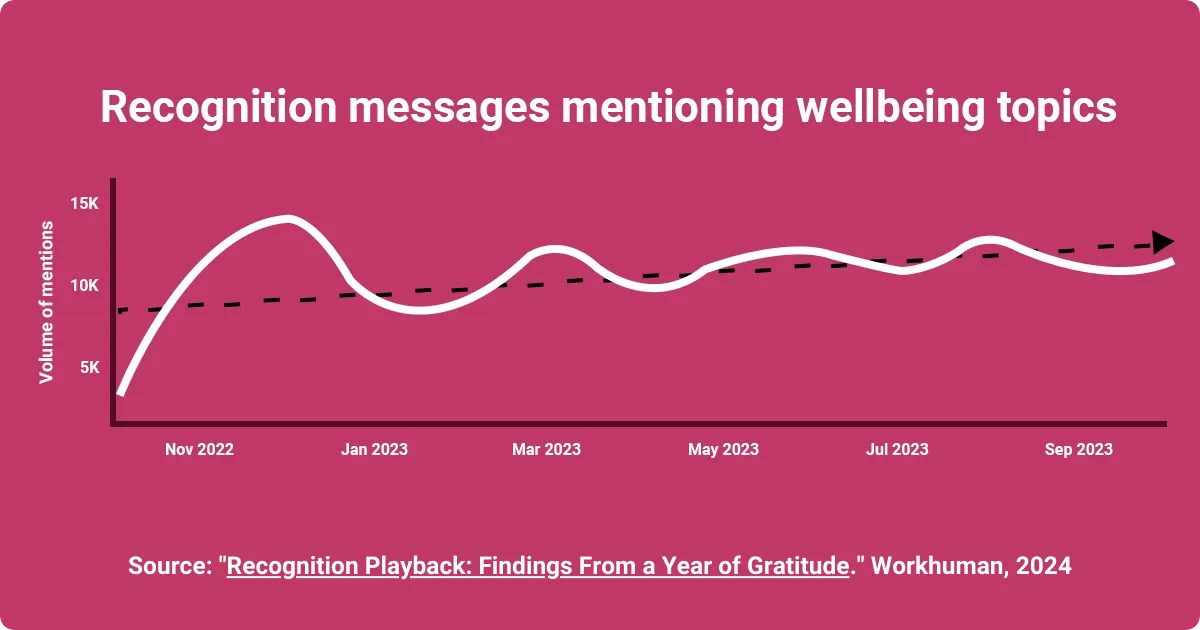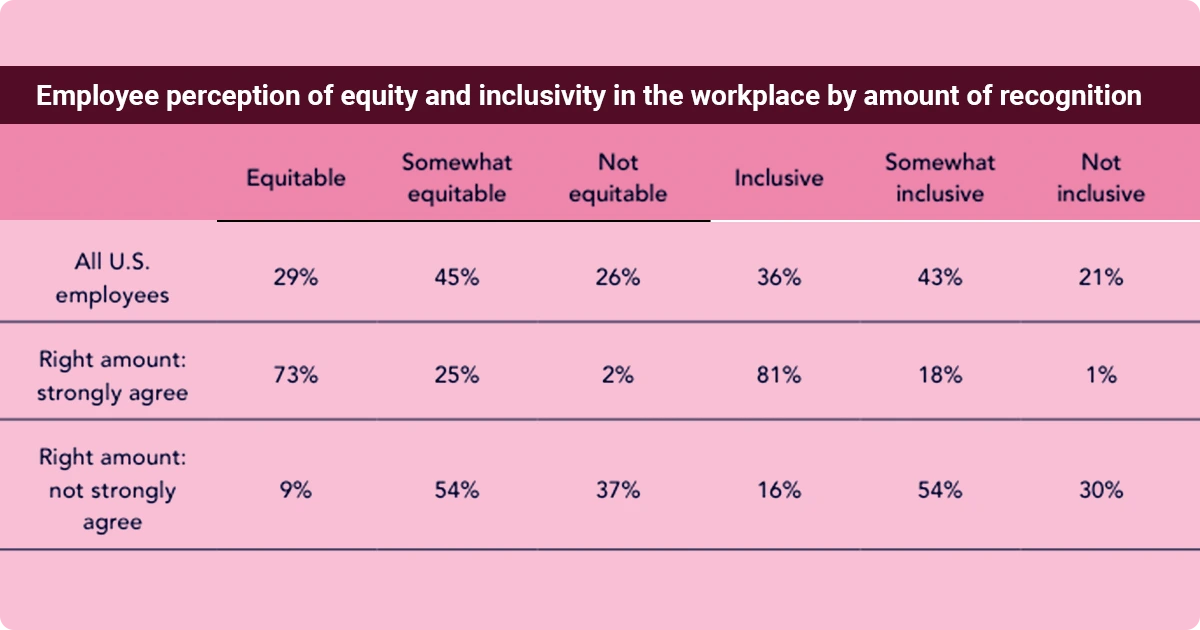What Is Diversity Analytics? How to Implement It for DEI Success

Does your organization have diversity and inclusion goals and practices in place? Do you know how effective those efforts actually are?
If not, you probably need diversity analytics. This vital information reveals inclusion gaps and trends within the workplace that indicate where more effort (or a new strategy) is required.
Let’s talk about what diversity analytics can do for your organization.
What is diversity analytics?
Diversity analytics is a process that seeks to collect and analyze different elements of a workplace, including social group breakdown of employees (race, gender, ethnicity, sexuality, and more), pay, hiring, ERG participation, retention, and leadership makeup.
Diversity analytics are crucial for every company to measure their progress toward their DEI goals (diversity, equity, and inclusion) and ensure their workplace is fair and equitable.
Why every company needs diversity analytics
No matter your DEI goals, every company needs to be collecting diversity data and analyzing it. These kinds of analytics put numbers and data to often intangible or hard-to-assess metrics. Leaders often feel like they’re being fair – and they may be putting in every effort to be – but nothing is quite as objective as data.
Pushing for equity across categories – race and gender, namely – ladders up to building a sense of belonging in the greater organization. Belonging is an essential human need and a crucial (but difficult to measure) metric.
Belonging is so important that it has a tangible impact on workers’ performance. It increases job performance, lowers turnover risk by 50%, and even decreases sick days by 75%.
Acknowledging and appreciating workers’ individuality is an important facet of belonging and one that also plays into your overall inclusion efforts. A workplace is truly equitable when it embraces individuality instead of forcing conformity. Diversity analytics can help reflect the success (or necessary improvements) of these efforts.
What diversity analytics are available?
There are many aspects of the workplace experience you can track and measure to analyze your inclusion efforts.
Pay equity
Pay gaps in race and gender remain a real concern today. A pay equity analysis can help ensure equal pay for equal work across an organization. This checks that those fulfilling the same role are compensated the same via payroll data analysis.
Not only is fair pay a legal requirement, but it’s also a recruitment strategy. Competitive pay rates help attract and retain top talent. Plus, being transparent about the process inspires trust among employees and builds a sense of motivation and loyalty.
You can run an internal equity analysis to assess pay transparency across age, gender, and race, as well as an external equity analysis to compare your rates against the broader market. Ideally, you should run both on a regular basis to ensure equitable compensation.
In your analysis, don’t just look at one factor at a time. Include additional cross-sections to account for other influences. It’s important to look at gender on its own, but considering race at the same time is just as crucial as women of color historically receive the lowest salariesOpens in a new tab.
Other factors to consider are geographic location, seniority, work experience, and performance ratings.
ERGs
How much do you know about your organization’s employee resource groups (ERGs)? Do you know how ERG participation influences engagement, retention, and even compensation?
If the answer to all of the above is no, it’s time to run some data.
Workhuman iQ® data shows that those who participate in ERGs are more engaged in the organization’s culture and also more likely to recommend their organization to a friend, know their organization’s values, and be highly engaged.
Download our exclusive report, The Evolution of Work: The Value of an Employee-First Culture, and uncover invaluable insights into what your employees need to cultivate a thriving workplace.
That said, the same data shows that one-third of employees in ERGs report being treated unfairly for their participation in the group. This is troublesome since ERG participation is a company-sponsored resource, and participation is voluntary – meaning it’s extra work for those who run these groups.
To ensure you’re not falling into the same trends, run a survey of ERG participants to see how they feel about the group itself and the larger implications of their participation. Do they feel more connected to their colleagues? Do they find more meaning in their work as a result? Do they feel like their participation has a negative impact on their work or how they’re treated?
Compare these results to broader pulse surveys to see how ERG members stack up.
Employee satisfaction
Employee satisfaction can seem difficult to measure, but with the right tools, it’s yet another metric you can analyze.
And no, satisfaction isn’t a “soft” metric that’s just a nice-to-have. In research on how to tackle U.S. employees stagnating engagementOpens in a new tab, Gallup found that actively disengaged employees cost the U.S. $450 billion to $550 billion in lost productivity per year. So it’s vital you know how satisfied and engaged your employees are.
There are a few ways to measure employee satisfaction:
- Satisfaction surveys to measure employees’ stress levels, work-life balance, sense of growth and leadership opportunities, trust in their supervisor, and more
- Absenteeism and turnover are key indicators of satisfaction
- Pulse surveys are quicker surveys with just 5-10 questions that can ask directly about satisfaction and engagement
- Employee net promoter scores (eNPS) are a quick way to gauge how likely employees are to recommend their workplace to a friend
Another piece of data to examine is employee recognition. Your employees’ recognition messages contain key indicators of wellbeing and satisfaction. Workhuman iQ found that the volume of recognition messages mentioning wellbeing topics like burnout and stress increased significantly in 2023, signaling an emerging trend in how employees support one another.

A workplace culture that values inclusion understands the purpose of these activities. But how do we measure inclusion?
Natural language processing tools like Workhuman iQ can quickly analyze swaths of messages to detect trends and offer crucial insight into employee satisfaction, as well as measure changes over time.
How to collect and measure diversity analytics
With clear goals and proper tools, you can collect and measure diversity analytics within your organization. Here are the steps to take for an effective analysis strategy:
Define your goals
Start the process by working backward from established DEI goals for employees. What do you hope to get out of this analysis? What facets of the employee experience do you need to analyze? What will you do with those analyses? What resources do you have to support these goals?
Be bold in your exploration but realistic within your constraints. You may have great ideas for certain elements to analyze, but if you don’t have the proper time, tools, or other resources at your disposal, the effort won’t get very far.
Design a thoughtful survey
In a pulse or satisfaction survey, lead with the least sensitive questions first. Forcing employees to jump into vulnerability without a warmup can turn them off from being honest.
When writing a pulse survey, keep it short. Five or ten questions should do the trick. Any longer and it will start to feel like an engagement survey. Keep it short and focused on one area.
Analyze data
Once your surveys and other mechanisms are in, it’s time to analyze. Don’t be afraid to dissect the data in myriad ways. Taking different angles is what will unlock the most profound insights and help bring about the most meaningful change.
Take the approach of identifying trends with hr predictive analytics rather than rating your organization’s diversity efforts. What are the trends in your hiring practices, turnover, pay rates, and ERG participation? What groups are most concentrated in what areas?
Act on the findings
Finally, it’s time to take action. This data is useless without resulting action. What will you do with the findings? Will you change your hiring process to make certain steps more accessible? Update your compensation structure. Launch a new leadership initiative?
How recognition influences inclusion
Employee recognition is a powerful way to make your workplace more inclusive. Workhuman and Gallup found that employees who strongly agree that they receive the right amount of recognition for the work they do, compared to those who don’t receive the right amount of recognition, are 4x as likely to perceive their workplace as inclusive and 7x more likely to perceive it as equitable.
Download the report to learn how you can build a culture that celebrates collective differences and a workplace where people of all backgrounds can thrive.

As mentioned earlier, recognition is also a goldmine of data. Analyzing recognition sent and received, as well as the messages within each piece of recognition, can uncover vital information about employee sentiment, satisfaction, and disparities. A strategically run recognition program will help quantify your inclusion efforts by tracking both the frequency of recognition by employees and the value of awards they receive.
You can also use recognition to map work circles to identify smaller communities within your organization to see how work is getting done, who’s influential, and what relationships are leading to real business impact.
However you are tracking inclusion, be sure to balance quantitative with qualitative data. This is where surveys, employee feedback, and ERG input come into play.
Celebrations
Workhuman Celebrations offers a treasure trove of valuable data while also making employees feel appreciated by appreciating their work and personal milestones.
You can measure the quantity and quality of participation by keeping track of activity levels per employee and average peer engagement with each post.
You can also measure engagement levels in real-time with each post, the quantity of replies, and the quality of participation.
These all ladder up to overall employee satisfaction. You can also analyze how celebrations differ across groups, like gender, race, and more.
See also: 14 Best Diversity, Equity & Inclusion (DEI) Activities for the Workplace
Inclusion Advisor
Workhuman’s Inclusion Advisor, a tool within the Workhuman platform, tracks and mitigates bias in real-time. Natural language processing (NLP) can analyze terms used in recognition messages to track unconscious bias rooted in gender or race, referring to stereotypical gender roles.
The resulting data reveals trends in employee communication, indicating key areas for growth and improvement.
Use the DEI dashboard to track award distribution and common bias to uncover gaps in recognition and empower leaders to implement a targeted DEI strategy framework to address biases.
Conclusion
Diversity analytics is a crucial way for an organization to take stock of its inclusion efforts and improve overall equity. With these tools and strategies, you can facilitate a greater sense of belonging and inclusivity among your employees.
About the author
Maeve Ginsberg
A wellness enthusiast and the mid-day walk’s #1 fan, Maeve champions work-life balance.
Having gone from a corporate job to self employment, Maeve has lived through countless working styles. This evolution forced confrontation of her own limiting beliefs, eventually breeding a completely individualized approach to work and productivity.
As a Senior Copywriter, Maeve often writes on workplace wellbeing and strives to advocate for all workers and leaders to find small yet significant ways to make their work lives healthier and more fulfilling.
Offline, Maeve enjoys testing new cuisines and hanging upside down off walls (also known as bouldering).